Master Yoga at Its Birthplace with a Yoga Alliance Certified School



Train under highly experienced yoga teachers who bring years of knowledge and dedication to their teaching.

Our course combines traditional yoga practices with contemporary teaching strategies, ensuring a thorough understanding of yoga's diverse aspects.

Our school is located in Rishikesh, known for its tranquil environment that fosters deep learning and spiritual growth.

The curriculum includes Hatha, Ashtanga, meditation, and pranayama, equipping you with the knowledge to teach and inspire others.

Graduates are eligible to register as Registered Yoga Teachers (RYT) with Yoga Alliance, allowing for international recognition of their qualifications.

Immerse yourself in our 14-day residential Yoga Teacher Training in Rishikesh. Experience intensive 8-hour daily classes with 7 expert teachers across 15 subjects.

Earn a globally recognized Yoga Alliance certificate, empowering you to register with any yoga federation worldwide and elevate your teaching credentials.
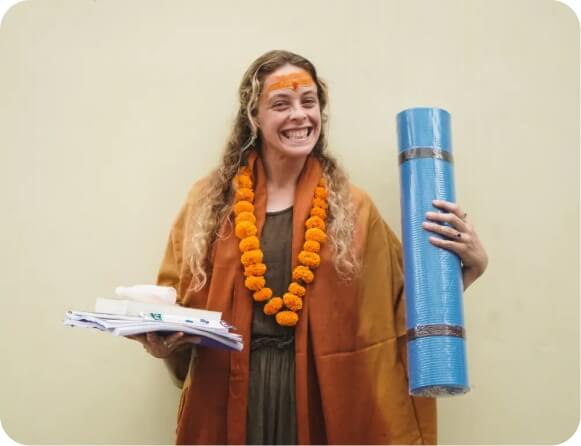
With this certification, you're qualified to teach yoga anywhere across the globe or even establish your own yoga school.
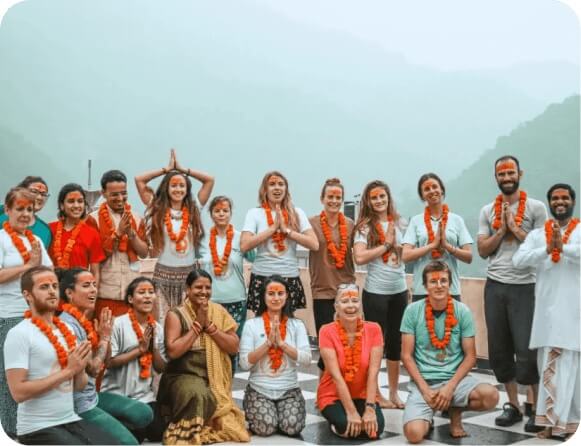
Connect with a diverse network of like-minded individuals, fostering both personal and professional growth through shared experiences and support.
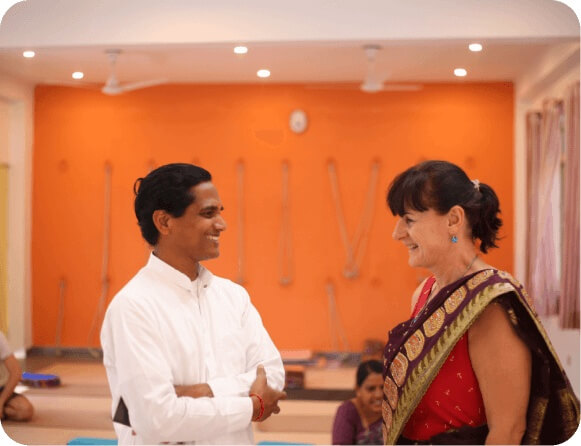
Our course uniquely emphasizes the development of soft skills through observation classes designed to enhance your communication abilities—essential for successful teaching and leadership.
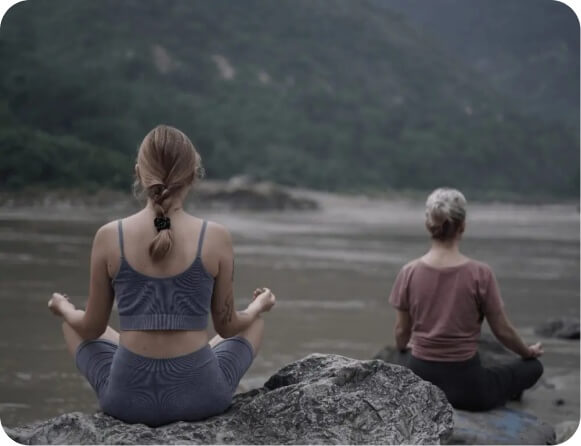
Dive into a journey of self-discovery and inner peace. This course facilitates deep explorations into mindfulness, meditation, and yoga’s spiritual aspects, enabling profound physical, mental, and spiritual transformation.
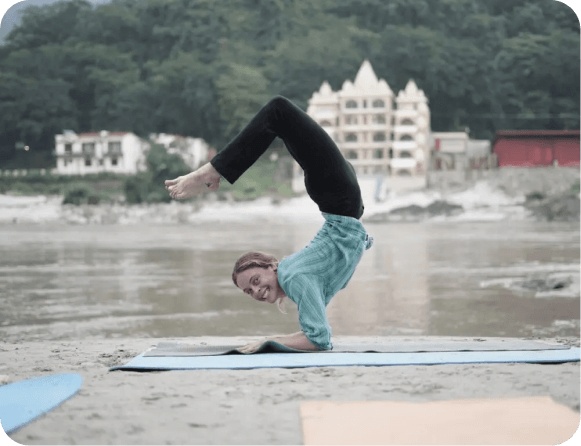
This comprehensive training not only deepens your own yoga practice but also enhances your self-awareness, setting a foundation for a fulfilling and impactful career in yoga.
Feel free to contact us. We will get back to you as soon as possible.

Masters
Accommodation
Environment
Designed to Equip You with Holistic Yoga Knowledge and Skills
05:30 AM
Wakeup
06:30 AM – 08:00 AM
Traditional Hatha Yoga &
Alignments
08:30 AM – 09:30 AM
Breakfast Time
09:30 AM – 10:30 AM
Yin Yoga, Ayurveda & Mantra Chant
10:15 AM – 11:15 AM
Kundalini Yoga
11:30 AM – 01:00 PM
Meditation, Pranayama,
Mudra, Bandha, & Satkarma
01:00 PM – 02:00 PM
Delicious Indian lunch
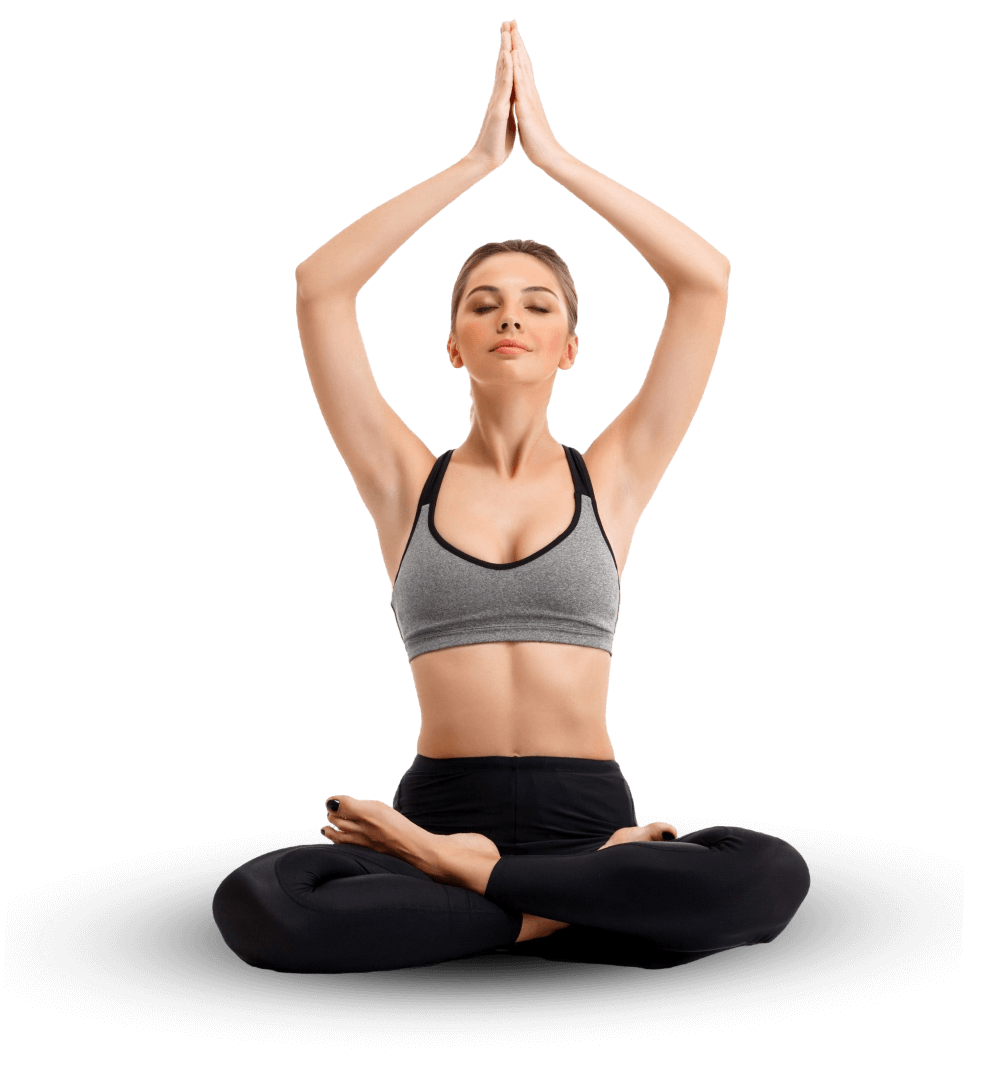
02:00 PM – 03:00 PM
Alignment & Adjustment
03:00 PM – 04:00 PM
Yoga Philosophy &
Ayurveda
04:00 PM – 05:00 PM
Self Study
05:30 PM – 07:00 PM
Ashtanga Vinyasa &
Alignments
07:00 PM – 08:00 PM
Enjoy Your Dinner
08:00 PM – 09:00 PM
Home Work & Assignments
09:00 PM
Rest Time

Hatha Yoga

What is Hatha Yoga?

History of Hatha Yoga

Benefits of Practice Hatha Yoga

Discipline of Practice Hatha Yoga

Perquisites of Practice Hatha Yoga

ASANA (POSTURES)

Students Will Learn About Each Asana (Posture)

Name of the Asana in English & Sanskrit Language

Introduction & History of Asana

Benefits & contraindications of each Asana

How to do this Asana step by step & dynamic way?

Counter Poses

Six steps of doing Asana meditatively

Centring, Entering, Refining, Holding, Come out, & Reflection

Anatomical aspects of the Asana

Therapeutically Approachment

Corrections

Modifications

Contraindications

Reference books

Conclusion

JOINTS AND GLANDS MOVEMENT

SEQUENCE OF THE HATHA YOGA ASANA

Standing Postures

Chandra Namaskara

Sitting Postures

Backward Bending Postures

Forward Bending Postures

Spinal Twisting Postures

Fire Series Postures

Inversion Postures

Surya Nmaskara

Shavasana

NAME OF ALL THE ASANA THAT WE WILL COVER APROX

STANDING POSTURES

Tadasana (Mountain Pose)

Udwahastasana – Upward Salute Pose

Utkatasana (Chair Pose)

Vrksyasana (Tree Pose) Ver1 & 2

Uthita Hasta Padongustasana (Raise Hand to Toes Pose)

Natarajasana (King Dancer Pose) Ver-1

Padohastasana (Hand to feet Pose)

Trikonasana (Triangle Pose)

Virbhadrasana (Warrior Pose)-1

Virbhadrasana (Warrior Pose)-2

Parswakonasana (Angle Pose)

Uthita Parswakonasana (Rise Angle Pose)

Upaveshasana (Squat Pose)

Maalaasana (Garland Pose)

Vajrasana (Kneeling Pose)

Margarisana (Cat Pose)

Simhasana (Lion Pose)

Veerasana (Hero pose)

Dandasana (Stamp Pose)

AkarnaDhanurasana

Badhakonasana (Butterfly Pose)

Sukhasana (Easy Pose)

Swastkasana (Auspicious Pose)

Ardha Padmasana (Half Lotus Pose)

Lolasana (Pendant Pose)

BACKWARD BENDING POSES

Makarasana (Crocodile Pose)

Byaghrasana (Tiger Pose)

Ardhakapotasana (Half Pigeon Pose)

Astanga Namaskarasana (Salutation with Eight Limbs)

Chaturanga Dandasana (Staff Pose)

Bhujangasana (Cobra pose)

Ardha Salbhasana (Half Locust Pose)

Ardha Dhanurasana (Half Bow Pose)

Urdwa Mukha Swanasana (Upward Facing Dog Pose)

Ustrasana (Camel Pose) Ver- 1

Side Plank Pose

Balasana (Child Pose)

Janushirsana – Head of the Knee Pose

Parivrita Janushirasana — Revolved Head of the Knee Pose

Ardha Badha Padma Paschimotanasana – Half bound Lotus intense west stretch

Triyanga Mukhaika PadoPaschimatanasana – Three Limbs Facing Intense West Stretch Pose

Marichyasana Ver – 1 – Pose dedicated to the sage Marichi

Badhakonasana – Butterfly Pose with forwarding bending

Upavistha Konasana – Seated wide Legged straddle

Paschimotanasana- Ver-1 – Seated Forward Bend Pose

Paschimotanasana- Ver-2 – Seated Forward Bend Pose

Purva Tanasana – Upward Plank Pose

FIRE SERIES – ASANAS FOR ABDOMEN

A & P- Akunchana Prasarana, Abdomen Contraction & Release

Single Leg Lift – Hold and Raise – Urdwa Prasarita Eka Padasana

One Knee Bend, Other Leg Lift – Arms resting on the floor

One Knee Bend, Other Leg Lift – Elbows resting on the floor

One Knee Bend, Other Leg Lift – Chick rest on the palm

Urdwa Prasarita Padasana (Upward Rise Legs)

Ananda Balasana (Happy Baby Pose)

Ardha Mastyendrasana – Half Fish Pose

Spinal Twisting In Kneeling Pose

Spinal Twisting In Table Pose

Supta Mastyendrasana – Spinal Twisting in Laying Pose

INVERSION POSES

Setubandhasana (Bridge Pose)

Viparit Karani (Inversion Pose)

Sarvangasana (Shoulder Stand)

Halasana (Plough Pose)

Mastyasana (Fish Pose)

Rocking Chair

Bakasana

Ek Padaasana

Garudasana
Ashtanga Vinyasa
Students will learn Ashtanga Vinyasa Yoga system was reconstructed from a mysterious manuscript written on a bundle of palm leaves, the Yoga Korunta. This collection of verses on HATHA YOGA was discovered in the 1930s by Yoga master and Sanskrit scholar Sri Tirumalai Krishnamacharya and his disciple K. Pattabhi Jois researching Sanskrit texts at a Calcutta university library. The manuscript is dated to be between 500 and 1,500 years old.

Introduction to Ashtanga Vinyasa Yoga

History of Ashtanga Vinyasa Yoga

Awakening the Fire Within

What is Ujai Breath?

How to do Ujai Breath?

Benefits of Ujai Breath

The Breath of Life

Prana

A Chakra Contemplation

Eight Limbs of Yoga and the Practice of K.Pattabhi Jois

How to Do Bandha in Ashtanga

Drishti – Focusing the Attention During Movements

Cleansing and purification

Creating a sacred place

The challenging asanas

proper use of props and yoga instruments

sun salutation a & b (week 1)

standing asana series (week 2)

sitting asana series (week 3)

finishing asana series (week 3)

Teaching Practice & Exam (Week 4)

Surynamaskara A

Samasthiti

Urdvahastasna

Uttanasana A

Uttanasana B

Chaturanga Dandasana

Urdvamukha Svanasana

Adhomukha Svanasana

Uttanasana B

Uttanasana A

Urdvahastasana

Samasthiti

Surynamaskara B

Samasthiti

Utkatasana

Uttanasana A

Uttanasana, B

Chaturanga Dandasana

Urdvamukha Svanasana

Adhomukha Svanasana

Bibhadrasana A

Chaturanga Dandasana

Urdvamukha Svanasana

Adhomukhasvanasana

Birbhadrasana. A

Chaturanga Dandasana

Urdvamukha Svanasana

Adhomukha Svanasana

Uttanasana B

Uttanasana A

Utkatasana

Samathiti
Primary Series – Standing Asanas

Padangusthasana (big toe pose)

Pada Hastasana (hands under feet)

Trikonasana (triangle)

Parivritta Trikonasana (revolved triangle)

Utthita Parsvakonasana (extended side angle )

Parivritta Parsvakonasana (revolved side angle)

Prasarita Padottanasana (wide leg forward fold)

Parsvottonasana (side intense stretch)

Utthita Hasta Padangusthasana (extended hand to big toe)

Ardha Baddha Padma Uttanasana (half bound lotus intense stretch)

Utkatasana (fierce pose)

Virabhadrasana I (warrior l)

Virabhadrasana II (warrior ll)

Dandasana (staff pose)

Paschimottanasana (3 X west intense stretch)

Purvottanasana (east intense stretch)

Ardha Baddha Padma Paschimottanasana bound lotus version of paschimottanasana)

Trianga Mukaikapada Paschimottanasana (1 leg folded back, forward fold)

Janu Sirsasana (head to knee pose) A, B & C

Marichyasana A, B C & D

Navasana (boat pose) X5

Kurmasana (tortoise)

Supta Kurmasana (reclining tortoise) → Jump back

Garbha Pindasana (embryo in the womb – 9 rolls)

Kukkutasana (rooster)

Baddha Konasana (bound angle, upright and fold) Jump back, vinyasa

Upavista Konasana (wide angle seated forward fold) release feet then lift

Supta Konasana (reclining angle pose, open plow) Jump back, lie down

Supta Padangustasana (reclining big toe pose A & B)

Ubhaya Padangustasana (both big toes pose)

Urdvha Mukha Paschimottanasana (upward facing paschimo) Jump back

Setu Bandhasana (bridge building pose) Jump back

Urdvha Dhanurasana (upward bow – Lift 5 times)

Paschimottanasana (intense stretch – 10 breaths.)

Savasana (corpse)

Salamba Sarvangasana (Shoulderstand – 10-25 breaths)

Halasana (plow)

Karnapidasana (ear pressure)

Urdvha Padmasana (upward lotus)

Pindasana in Sarvangasana (embryo)

Matsyasana (fish.)

Uttana Padasana (intense stretched feet or legs)

Sirsasana (headstand A = 10-50 breaths B = 10 breaths)

Balasana (child pose)

Baddha Padmasana (bound lotus and bow – 10 breaths)

Padmasana (lotus – 10 slow breaths)

Tolasana (the uplifting – scales – 10 fierce Ujjaii breaths)

One more vinyasa to Savasana…

Savasana (corpse)
KUNDALINI YOGA
This is the most spintual form of yoga, which you can undertake. The yoga school in Rishikesh will assist you to awaken your Kundalini Energy It is also called as ‘serpent energy and resides at the base of the spine. If untapped, one can lead an entire lifetime, without knowing about the huge possibilities that its awakening can bring about. Through Kundalini Yoga practice, you will be to awaken the dormant energy, which rises Through the chakras aligned along the spine. As the energy moves through the chakras, it clears the chakras of any blockages. The ultimate destination of this energy is the Crown chakra, from where it unites with the male energy, or Purusha. Kundalini energy is a female form, which also assumes the power called Shakti.
Kundalini yoga sessions at Hariom Yoga Vidya School comprise repetitive asana practice, mantra chanting, singing, and breathing exercises You get knowledge of the pads or energy channels as well, as a part of the program. You can experience real spintual awakening, if you stick to a strict regimen while learning Kundalini Yoga.

Introduction to Kundalini

History of Kundalini

Styles of Kundalini

Methods of Awakening

Kriya Yoga

Introduction to Pranas and Nadis

Role of pragas in Awakening and Aura

Nadis and Chakras

Granthis and Kabetras

By the regular practice of Kundalini, it helps in achieving a healthy and flexible body

Pranayama and Koyas eliminate diseases from your mind and body

Kundalini practice enhances your immunity by becoming free from several diseases

High sell-awareness and more receptiveness

Purification of body decreasing toons body decrease

Awareness breath that enhances well-being

Good ale discipline

Real spiritual awakening

Good control over energy that alisists in all kinds of healing
Kriyas

Sahasrara Chakra

Ajna Chakra

Vishuddha Chakга

Anahata Chakга

Manipura Chakra

Svadhishthana Chakra

Muladhara Chakra

Introduction to Man Mandalas
Pranayama
Pranayama is an integral part of Yogic Practices also mentioned in the eight limbs of Patanjali Yoga sutras. Pranayama specifically focuses on increased efficiency and balancing of the breath of an individual. Prana is the vital energy of the body and Yama refers to the expansion and growth. There are many physiological and psychological benefits of doing pranayama practices daily.
Introduction of Pranayama

Meaning of Pranayama

Definition

Breathing experiment

Conclusion
Kapalbhati Pranayama (Frontal Brain Cleaning Breath)

Introduction – Meaning – Benefits – Contradictions

Duration of practice – Demonstration of Kapalabhati Pranayama

Preparation of Kapalabhati for students – Technique One

How to do Kapalabhati Pranayama?
Sheetali Pranayama (Cooling Breath)

Introduction – Meaning – Benefits – Contradictions

Duration of practice – Demonstration of Sheetali Pranayama

Preparation of Sheetali for students
Sheetkari Pranayam (Hishing Breath)

Introduction – Meaning – Benefits – Contradictions

Duration of practice – Demonstration of Sheetkari Pranayama

Preparation of Sheetkari for students
Bhastrika Pranayam (Bellows Breath)

Introduction – Meaning – Benefits – Contradictions – Duration of practice

Demonstration of Bhastrika Pranayama

Preparation of Bhastrika for students

Technique One

How to do Bhastrika Pranayama?
Bhramri Pranayama (Humming Bee Breath)

Introduction – Meaning – Benefits – Contradictions – Duration of practice

Demonstration of Bhramri Pranayama

Preparation of Bhramri for students

Technique One

How to do Bhramri Pranayama?
Ujjayi (Psychic Breath)

Introduction – Meaning – Benefits – Contradictions – Duration of practice

Demonstration of Ujjayi Pranayama

Preparation of Ujjayi for students

Technique One

How to do Ujjayi Pranayama?
Nadishodhana Pranayama (Psychic Network / Chanel Purification)

Introduction – Meaning – Benefits – Contradictions – Duration of practice

Duration of practice

Demonstration of Nadishodhana Pranayama

Preparation of Nadishodhana for students

Technique One

How to do Nadishodhana Pranayama?
Kapalbhati Pranayama 2 (Frontal Brain Cleaning Breath)

Introduction – Meaning – Benefits – Contradictions – Duration of practice

Demonstration of Kapalabhati Pranayama Two

Preparation of Kapalabhati for students

Technique Two

How to do Kapalabhati Pranayama?
Sheetali Pranayama 2 (Cooling Breath)

Introduction – Meaning – Benefits – Contradictions – Duration of practice

Demonstration of Sheetali Pranayama Two

Preparation of Sheetali for students

Technique Two

How to do Sheetali Pranayama?
Sheetkari Pranayam 2 (Hishing Breath)

Introduction – Meaning – Benefits – Contradictions – Duration of practice

Demonstration of Sheetkari Pranayama Two

Preparation of Sheetkari for students

Technique Two

How to do Sheetkari Pranayama?
Bhastrika Pranayam (Bellows Breath) 2 & 3

Introduction – Meaning – Benefits – Contradictions – Duration of practice

Demonstration of Bhastrika Pranayama Two & Three

Preparation of Bhastrika for students

Techniques Two & Three

How to do Bhastrika Pranayama?
Bhramri Pranayama 2 & 3 (Humming Bee Breath)

Introduction – Meaning – Benefits – Contradictions – Duration of practice

Demonstration of Bhramri Pranayama Two & Three

Preparation of Bhramri for students

Techniques Two & Three

How to do Bhramri Pranayama?
Ujjayi (Psychic Breath) 2 & 3

Introduction – Meaning – Benefits – Contradictions – Duration of practice

Demonstration of Ujjayi Pranayama Two & Three

Preparation of Ujjayi for students

Techniques Two & Three

How to do Ujjayi Pranayama?
Nadishodhana Pranayama 2 & 3 (Psychic Network / Chanel Purification)

Introduction – Meaning – Benefits – Contradictions – Duration of practice

Demonstration of Nadishodhana Pranayama Two & Three

Preparation of Nadishodhana for students

Techniques Two & Three

How to do Nadishodhana Pranayama?
Satkarma
The Shatkarmas are also called Shatkriyas. It is a set of body purification techniques, with the help of which, you can cleanse your system internally. In order to move ahead in your yogic journey, you need to have a strong body, as it serves as the foundation for yoga sadhana. Shatkarmas consists of six cleansing techniques, Basti, Nauli, Dhauti, Trataka, Neti, and Kapalbhati. Each of these kriyas targets specific organs in the alimentary canal. Apart from just strengthening the body, it also leads to the balance of the Tridoshas. It also helps in the flow of Prana through the Nadis. Kapalbhati is not only a kriya, but it is also a Pranayama. So, you get to indulge in two practices, rolled into one. It is a forceful breathing practice, that can aid in alleviating stress from your brain. You can also practice Neti, very easily. However, a guide will initiate the process, for you to feel comfortable later on.
Six Steps of Cleansing – Subject focus on Jala Neti & Sutra Neti
Introduction to Six Types of Satkarma

Meaning of Pranayama

Contradictions

Benefits
Introduction to the Practical Jala Neti

Contradictions

Benefits

Preparation of Jala Neti

Demonstration of Jala Neti by Teacher

Technique

Practice with students
Introduction to the Practical Sutra Neti

Contradictions

Benefits

Preparation of Sutra Neti

Demonstration of Sutra Neti by Teacher

Technique

Practice with students
Bandhas
Bandha is a lock. You can lock yourself in certain postures, to increase energy flow to specific organs. You can also call it the energy lock. There are four main bandhas, that the yogis practiced from early on. They include Mula, Uddiyana, Jalandhara and Maha Bandha. The Maha bandha is a combination of the three bandhas. Moreover, it is the highest form of body lock. Practicing bandhas involves muscular contractions. The Mula bandha is especially useful in awakening the Kundalini energy. The Uddiyana Bandha energizes the Heart Chakra and the abdominal organs. Likewise, the Jalandhara Bandha energizes the thyroid and parathyroid, along with respiratory organs. You can also practice the three together, starting from the throat. Bandhas help to lock and release energies from various organs, and increase blood as well as energy flow. You also learn to observe the performance later.
Jalandhara Bandha

Introduction – Meaning – Benefits

Contradictions – Duration of practice

Preparation

Demonstration

Technique Practice with students
Udiyana Bandha

Introduction – Meaning – Benefits

Contradictions – Duration of practice

Preparation

Demonstration

Technique Practice with students
Mula Bandha

Introduction – Meaning – Benefits

Contradictions – Duration of practice

Preparation

Demonstration

Technique Practice with students
Maha Bandha

Introduction – Meaning – Benefits

Contradictions – Duration of practice

Preparation

Demonstration

Technique Practice with students
Mudra – Gesture
A Mudra is a gesture or seal in yoga. You may come across mudras in dance forms as well, however, they are much different. When you practice mudras, you can channelize Prana through the body. There are various kinds of mudras, like Hasta mudras, Kaya mudras, and Chitta Mudras. Hasta mudras are the most important in Yoga practice. According to the Science, Ayurveda, there are five elements or Mahabhutas. Fire, earth, air, water, and ether. Each finger represents one maha bhuta. You can manipulate each element for the betterment of your body and health, and increase or decrease the flow of prana to specific body parts. One of the most commonly used mudras, is Gyan mudra. You can practice it while performing the asanas. It helps in obtaining knowledge and greater wisdom from the universal body. You can practice mudras anywhere while sitting in your home or workplace, so that is an added benefit of mudras. Get the maximum benefits today.
Jnana Mudra (Psychic Gesture Of Knowledge)

Introduction – Benefits – Duration

Preparation – Demonstration

Technique Practice with students
Chin Mudra (Psychic Gesture Of Consciousness)

Introduction – Benefits – Duration

Preparation – Demonstration

Technique Practice with students
Bhairava Mudra – Shiva Mudra

Introduction – Benefits – Duration

Preparation – Demonstration

Technique Practice with students
Hridaya Mudra – Heart Gesture

Introduction – Benefits – Duration

Preparation – Demonstration

Technique Practice with students
Meditation
Meditation is an ancient practice that goes back thousands of years ago. It comprises of physical as well as mental practices. You can meditate to relax your mind and also remove stress from your life. Meditation has its roots in Hinduism and Buddhism, but it is not a religious practice. You will learn about several different ways to meditate as a part of the 200 hour yoga teacher training course. The different meditation types, which you can learn are mantra meditation, transcendental meditation, moving meditation, mindfulness meditation, body-centred meditation, visualization, and so on. You can use several props to meditate, like singing bowls, malas, and music. Meditation can heal several traumas and physical ailments. You learn to concentrate on the present, when you do meditation properly.
Introduction of Meditation/ Meaning and Things

Mantra Chanting with Meaning and Benefits/Practice

Apa Meditation with Meaning and Benefits/Practice

Sixty-One Energy Points Discussion

OM Meditation with Meaning and Benefits/Practice

The Practice of Osho Dynamic Meditation

Music Meditation Practice

Dancing Meditation Practice

Walking Meditation Practice

Introduction of Tratak Meditation/Stages/Benefits

The Practice of Dot Meditation

The Practice of Yantra Meditation

Practice of Candle Meditation
Yogic Relaxation Techniques
Relaxation comes naturally as a part of the yoga teacher training course. You can divert your mind from a cluttered life, by meditating. However, relaxation has a broader meaning. There are various conscious forms of relaxation that can help you to rejuvenate your mind. The instant relaxation technique in one in which you tighten and relax the muscles to get into a relaxed state of mind. Quick relaxation techniques are also a part of the program. Shavasana is an important consideration here, as you learn how to guide your yoga practice towards a relaxing session through conscious relaxation techniques. Yoga Nidra is another conscious relaxation technique which can help you to enter a deep state of relaxation. Master the same under the guidance of yoga experts at Hariom Yoga Vidya School.
Meditation, asana practice, and Pranayama go hand-in-hand. Learn about the various techniques as a part of the teacher training course at Rishikesh. You will be learning the various forms of relaxation in the company of individuals who have been practicing yoga for a long time.
Synopsis of Featured Teachings

Point-to-Point Movement and then Stillness

Point-to-Point Tension and Relaxation

Entire-Body Tension and Relaxation

Point-to-Point Relaxation

Selective Tension and Relaxation of Body Parts

More Detailed Point-to-Point Relaxation with Visualization of Pure White Divine Light at the Cardiac Center

Detailed Point-to-Point Relaxation with Spinal Breathing and “So-Ham”
Alignment, Correction & Adjustment
Alignment and adjustment are fundamental concepts in the practice of Yoga, both for practitioners and instructors. Here’s a breakdown of each:
What is alignment in Yoga?
Alignment refers to the precise positioning of the body in Yoga poses (Asanas) to achieve optimal physical and energetic benefits while minimizing the risk of injury. It involves the correct placement of various body parts, such as the feet, legs, pelvis, spine, arms, and head, in relation to one another and to the ground. Proper alignment ensures that the body is in a balanced and stable position, allowing for the efficient flow of energy (Prana) throughout the body. It also helps to create space within the joints, improve posture, enhance flexibility, and build strength. Alignment principles may vary depending on the specific Yoga style or tradition but generally emphasize alignment with the natural curves of the spine and engagement of relevant muscle groups.
What is Adjustment in Yoga?
Adjustment, also known as hands-on adjustment or assists, involves the gentle physical manipulation of a student’s body by the instructor to help them refine their alignment, deepen their stretch, or experience a pose more fully. Adjustments can provide valuable feedback and support to students, helping them overcome physical limitations, release tension, and access deeper levels of awareness in their practice. Adjustments are typically performed with sensitivity and mindfulness, respecting the individual’s body and boundaries. They may include subtle corrections to alignment, gentle pressure to encourage relaxation or engagement, or supportive touch to guide the student into a safer or more effective expression of a pose.

Roll of alignment and adjustment in Yoga concept

Physical Alignment in Yoga

The Role of Adjustment

Benefits Beyond the Physical

Alignment and Adjustment in Spiritual Practice

The Role of Alignment and Adjustment in Yoga: A Comprehensive Overview

Understanding Alignment in Yoga

Components of Alignment

The Role of Adjustment in Yoga

Benefits of Adjustment

Challenges and Considerations in Adjustment

Integrating Alignment and Adjustment in Yoga Practice

Alignment and Adjustment in Yoga Asanas for Students’ Homework
Teaching Methodology

Teaching is an art and it can be developed through practice and knowledge.

Teach with sincerity and compassion for yourself first and then your students will benefit as well.

Teach from the heart, never from the mind.

Respect that divine energy has honored you to be a teacher to help people.

Changing peoples’ lives into positivity by teaching them yoga and meditation; as a teacher, your inner journey and happiness will grow.

Respect the students, be friendly and professional but at the same time strong inside not to entertain any negativity while teaching yoga.

Surrender to life and divine energy; you will feel guided by the unknown force.

Enjoy teaching mindfully with joy and happiness.

Be present, aware, and energetic all the time during or after the class.

Be regular for your own self-practice of yoga and meditation; you owe it to yourself and your students.

Be aware and sensitive to students’ poses, alignment, breathing pattern, group energy, and allow the teaching and response to happen accordingly and spontaneously.

Pay equal attention to the students but focus more attention on beginners until they catch up with the regular class.

Welcome the students – greeting the students makes them comfortable and feel welcomed.

Start the class on time and end on time. This honors the student since most students have limited time and have sacrificed to get to the class.

Always ask if the students have any physical problems and injuries.

Start the class with some chanting, prayer, or a short meditation.

The voice of the teacher should be audible to everyone and the volume should be according to the group.

Give clear instructions.

Make adjustments verbally and physically.

Appreciate and motivate the students during the class.

Move around the class effectively to see all the students and to check their alignment.
Yoga Philosophy
Along with the practical applications of yoga, you need to fall back at times, on the foundation of yoga. That is what Yoga Philosophy is all about. The main philosophy of yoga states that the mind, body, and soul are all one. You need to know about the philosophical ideas, to be able to utilize the various practices under the umbrella of yoga. In yoga, you cannot choose one or leave out another aspect. The entire practice has to be carried out in totality. Spiritual ignorance can only create suffering, and nothing more than that. So, you need to amass the wealth of knowledge that the philosophy of yoga offers. You can call it the blueprint of your yogic practice. It enlists what all you should follow, and what you should not. The main principle of yoga is that the mind, body, and soul are one. You cannot separate one from the other. It also allows the concept of God. It is amongst the six orthodox schools.

Yoga Sutra – discipline, types of thoughts, God

7 Chakras – Muladhara, Swadhisthana, Manipur, Anahata, Visudha, Anjya, Sahasrara

Three types of gunas – Satva, Rajas & Tamas

Three types of body – Sthula, Sukhma & Karana

Types of Yoga (Hatha, Karma, Bhakti, Astanga)

What is yoga? Introduction of Yoga

What is philosophy?

What are the obstacles to yoga?

What are the causes of pain?

What are the eight limbs of Yoga?

Exercises

Exam
Mantra Chanting
Mantras are an important part of yoga practice. They may have religious connotations, but anyone can practice them. They comprise of specific syllables, words, or phrases, picked up from Sanskrit, the oldest language of the Vedas. You can practice mantra chanting to resonate with the universe. When you repeat a set of syllables, words or phrases repeatedly, they align with the universe’s vibrations. They give the practitioners, the perfect scope to manifest. They are also practiced in abundance in Tantra. You can gain a proper direction and focus in your life, if you practice mantra chanting daily. Learn about the most important ones like Aum, Gayatri Mantra, Om Namah Shivaay, and so on. The opening chant and closing chant in Hatha Yoga also carry a lot of significance. Mantras can help you to get rid of all sorts of tensions and physical ailments, by diverting your mind towards a higher realm.
What is Mantra?
The word “mantra” is derived from two words. The first word is “Manas” or “mind,” which relates to the “man” syllable means “To think”, the second word is a suffix “Tra” which means instruments, tools, protect, or free from. Therefore, the word Mantra in its most literal sense means “to free from the mind Mantra is a tool used by the Mind to be free from all kinds of distractions of the Mind field.
Benefits of Mantra Chanting

Hatha Yoga Manra – Yogena Schitasya Padena Vacham

Om Asato Maa Sad-Gamaya, Tamaso Maa Om Saha Na bhavatu, Saha Nau Bhunaktu

Aum mantra – Aum…Aum..Aum

Gayatri mantra – Om Bhur Bhubah Swaha

Ganesh mantra – Om Vakratunda mahaakaaya

Guru Mantra – Guru Brahma Guru Visnu
Astanga Vinyas Mantra

Avahu Purusa Karam, shankha Vande Gurunam Charanara Vinde
Astanga Vinyasa Closing Mantra

Swasti prajaabhyah paripala
Bhajan or Spiritual Songs
A Bhajan is basically a devotional song, that you sing to glorify any particular deity or the lord in general. It is usually the ancient scriptures, from where it originates. You can sing it straightforward, or recite it like a mantra, or add some melody. Bhajan is related to Bhakti. You will learn of different styles of Bhakti songs from different parts of India. You may hear them coming from various Hindi complicated dialects, and some using various day-to-day occurrence in in simple words and forms. You will be able to get rid of mental issues, once you make such devotional hymns a part of your practice. . This kind of devotional singing is very popular at Indian pujas and rituals. Slowly the wet is also opening up to its possibilities, as it tends to calm the mind. It is a spiritual practice of sorts, where everyone participates in one go. You can also start doing this practice alone, from home.

Shiva Shiva Shambhu, Shiva Shiva Shambhu, Mahadeva Shambhu, Mahadeva Shambhu, Shiva Shiva Shambhu.

Govinda Govinda Govinda Bhaja Gopala, Gopala Gopala Gopala Bhaja Gopala.

Govinda Bol Hari Gopal Bol, Radha Ramana Hari Govinda Bol.

Hare Krishna Hare Krishna, Krishna Krishna Hare Hare, Hare Rama Hare Rama, Rama Rama Hare Hare.

Sita Ram Sita Ram, Sita Ram Jai Sita Ram, Radhe Shyam Radhe Shyam, Radhe Shyam Jai Radhe Shyam.

Raghupati Raghava Rajaram, Patita Pavana Sitaram, Ishwar Allah Tero Nam, Sab Ko Sanmati De Bhagavan.

Natavara Nagara Nanda Bhajore Mana Govinda, Natavara Nagara Nanda … Karo Nama Roj Prema se, Mana Ko Dho-Nitya Niyama se, Nirmala Mana Prabhu Ko Pasanda Hei, Mat Karo Mano Ko Ganda, Bhajore Mana Govinda.

Jai Jai Radha Ramana Hari Bol, Jai Jai Radha Ramana Hari Bol.
Himalayan Excursion
The Himalayan Excursion is a unique opportunity to explore the majestic Himalayas and immerse yourself in the natural beauty and spiritual energy of the region. The excursion includes visits to sacred sites, temples, and monasteries, as well as guided hikes and nature walks in the Himalayan foothills. You will have the opportunity to connect with the local culture, traditions, and people, and experience the profound sense of peace and tranquility that the Himalayas are known for. Whether you are seeking adventure, relaxation, or spiritual growth, the Himalayan Excursion offers something for everyone. Join us on this unforgettable journey and discover the magic of the Himalayas.
Cultural Program
The Cultural Program is a celebration of the rich and diverse cultural heritage of India. It includes traditional music, dance, and performances by local artists, as well as opportunities for students to participate and showcase their talents. The program aims to foster a deeper appreciation and understanding of Indian culture, history, and traditions through interactive and engaging activities. You will have the chance to learn about different art forms, musical instruments, dance styles, and regional cuisines, as well as participate in cultural workshops and events. The Cultural Program is a fun and interactive way to experience the vibrant and colorful culture of India and create lasting memories with your fellow students.
Certification Ceremony
The Certification Ceremony is the culmination of your 300-hour Yoga Teacher Training Course. It is a special event where you will receive your certificate of completion and celebrate your achievements with your teachers, classmates, and friends. The ceremony is a time to reflect on your journey, express gratitude for the knowledge and experiences gained, and honor the dedication and hard work you have put into your training. You will have the opportunity to share your thoughts, feelings, and insights with your peers, and receive blessings and well-wishes for your future as a certified Yoga teacher. The Certification Ceremony is a joyous and meaningful occasion that marks the beginning of your new chapter as a Yoga teacher and the continuation of your personal and spiritual growth.
KUNDALINI YOGA
This is the most spintual form of yoga, which you can undertake. The yoga school in Rishikesh will assist you to awaken your Kundalini Energy It is also called as ‘serpent energy and resides at the base of the spine. If untapped, one can lead an entire lifetime, without knowing about the huge possibilities that its awakening can bring about. Through Kundalini Yoga practice, you will be to awaken the dormant energy, which rises Through the chakras aligned along the spine. As the energy moves through the chakras, it clears the chakras of any blockages. The ultimate destination of this energy is the Crown chakra, from where it unites with the male energy, or Purusha. Kundalini energy is a female form, which also assumes the power called Shakti.
Kundalini yoga sessions at Hariom Yoga Vidya School comprise repetitive asana practice, mantra chanting, singing, and breathing exercises You get knowledge of the pads or energy channels as well, as a part of the program. You can experience real spintual awakening, if you stick to a strict regimen while learning Kundalini Yoga.

Introduction to Kundalini

History of Kundalini

Styles of Kundalini

Methods of Awakening

Kriya Yoga

Introduction to Pranas and Nadis

Role of pragas in Awakening and Aura

Nadis and Chakras

Granthis and Kabetras

By the regular practice of Kundalini, it helps in achieving a healthy and flexible body

Pranayama and Koyas eliminate diseases from your mind and body

Kundalini practice enhances your immunity by becoming free from several diseases

High sell-awareness and more receptiveness

Purification of body decreasing toons body decrease

Awareness breath that enhances well-being

Good ale discipline

Real spiritual awakening

Good control over energy that alisists in all kinds of healing
Kriyas

Sahasrara Chakra

Ajna Chakra

Vishuddha Chakга

Anahata Chakга

Manipura Chakra

Svadhishthana Chakra

Muladhara Chakra

Introduction to Man Mandalas
Meditation
Meditation is an ancient practice that goes back thousands of years ago. It comprises of physical as well as mental practices. You can meditate to relax your mind and also remove stress from your life. Meditation has its roots in Hinduism and Buddhism, but it is not a religious practice. You will learn about several different ways to meditate as a part of the 200 hour yoga teacher training course. The different meditation types, which you can learn are mantra meditation, transcendental meditation, moving meditation, mindfulness meditation, body-centred meditation, visualization, and so on. You can use several props to meditate, like singing bowls, malas, and music. Meditation can heal several traumas and physical ailments. You learn to concentrate on the present, when you do meditation properly.
Introduction of Meditation/ Meaning and Things

Mantra Chanting with Meaning and Benefits/Practice

Apa Meditation with Meaning and Benefits/Practice

Sixty-One Energy Points Discussion

OM Meditation with Meaning and Benefits/Practice

The Practice of Osho Dynamic Meditation

Music Meditation Practice

Dancing Meditation Practice

Walking Meditation Practice

Introduction of Tratak Meditation/Stages/Benefits

The Practice of Dot Meditation

The Practice of Yantra Meditation

Practice of Candle Meditation
Hatha Yoga

What is Hatha Yoga?

History of Hatha Yoga

Benefits of Practice Hatha Yoga

Discipline of Practice Hatha Yoga

Perquisites of Practice Hatha Yoga

ASANA (POSTURES)

Students Will Learn About Each Asana (Posture)

Name of the Asana in English & Sanskrit Language

Introduction & History of Asana

Benefits & contraindications of each Asana

How to do this Asana step by step & dynamic way?

Counter Poses

Six steps of doing Asana meditatively

Centring, Entering, Refining, Holding, Come out, & Reflection

Anatomical aspects of the Asana

Therapeutically Approachment

Corrections

Modifications

Contraindications

Reference books

Conclusion

JOINTS AND GLANDS MOVEMENT

SEQUENCE OF THE HATHA YOGA ASANA

Standing Postures

Chandra Namaskara

Sitting Postures

Backward Bending Postures

Forward Bending Postures

Spinal Twisting Postures

Fire Series Postures

Inversion Postures

Surya Nmaskara

Shavasana

NAME OF ALL THE ASANA THAT WE WILL COVER APROX

STANDING POSTURES

Tadasana (Mountain Pose)

Udwahastasana - Upward Salute Pose

Utkatasana (Chair Pose)

Vrksyasana (Tree Pose) Ver1 & 2

Uthita Hasta Padongustasana (Raise Hand to Toes Pose)

Natarajasana (King Dancer Pose) Ver-1

Padohastasana (Hand to feet Pose)

Trikonasana (Triangle Pose)

Virbhadrasana (Warrior Pose)-1

Virbhadrasana (Warrior Pose)-2

Parswakonasana (Angle Pose)

Uthita Parswakonasana (Rise Angle Pose)

Upaveshasana (Squat Pose)

Maalaasana (Garland Pose)

Vajrasana (Kneeling Pose)

Margarisana (Cat Pose)

Simhasana (Lion Pose)

Veerasana (Hero pose)

Dandasana (Stamp Pose)

AkarnaDhanurasana

Badhakonasana (Butterfly Pose)

Sukhasana (Easy Pose)

Swastkasana (Auspicious Pose)

Ardha Padmasana (Half Lotus Pose)

Lolasana (Pendant Pose)

BACKWARD BENDING POSES

Makarasana (Crocodile Pose)

Byaghrasana (Tiger Pose)

Ardhakapotasana (Half Pigeon Pose)

Astanga Namaskarasana (Salutation with Eight Limbs)

Chaturanga Dandasana (Staff Pose)

Bhujangasana (Cobra pose)

Ardha Salbhasana (Half Locust Pose)

Ardha Dhanurasana (Half Bow Pose)

Urdwa Mukha Swanasana (Upward Facing Dog Pose)

Ustrasana (Camel Pose) Ver- 1

Side Plank Pose

Balasana (Child Pose)

Janushirsana - Head of the Knee Pose

Parivrita Janushirasana — Revolved Head of the Knee Pose

Ardha Badha Padma Paschimotanasana - Half bound Lotus intense west stretch

Triyanga Mukhaika PadoPaschimatanasana - Three Limbs Facing Intense West Stretch Pose

Marichyasana Ver – 1 - Pose dedicated to the sage Marichi

Badhakonasana - Butterfly Pose with forwarding bending

Upavistha Konasana – Seated wide Legged straddle

Paschimotanasana- Ver-1 – Seated Forward Bend Pose

Paschimotanasana- Ver-2 – Seated Forward Bend Pose

Purva Tanasana – Upward Plank Pose

FIRE SERIES – ASANAS FOR ABDOMEN

A & P- Akunchana Prasarana, Abdomen Contraction & Release

Single Leg Lift – Hold and Raise – Urdwa Prasarita Eka Padasana

One Knee Bend, Other Leg Lift – Arms resting on the floor

One Knee Bend, Other Leg Lift – Elbows resting on the floor

One Knee Bend, Other Leg Lift – Chick rest on the palm

Urdwa Prasarita Padasana (Upward Rise Legs)

Ananda Balasana (Happy Baby Pose)

Ardha Mastyendrasana – Half Fish Pose

Spinal Twisting In Kneeling Pose

Spinal Twisting In Table Pose

Supta Mastyendrasana – Spinal Twisting in Laying Pose

INVERSION POSES

Setubandhasana (Bridge Pose)

Viparit Karani (Inversion Pose)

Sarvangasana (Shoulder Stand)

Halasana (Plough Pose)

Mastyasana (Fish Pose)

Rocking Chair

Bakasana

Ek Padaasana

Garudasana
Ashtanga Vinyasa
Students will learn Ashtanga Vinyasa Yoga system was reconstructed from a mysterious manuscript written on a bundle of palm leaves, the Yoga Korunta. This collection of verses on HATHA YOGA was discovered in the 1930s by Yoga master and Sanskrit scholar Sri Tirumalai Krishnamacharya and his disciple K. Pattabhi Jois researching Sanskrit texts at a Calcutta university library. The manuscript is dated to be between 500 and 1,500 years old.

Introduction to Ashtanga Vinyasa Yoga

History of Ashtanga Vinyasa Yoga

Awakening the Fire Within

What is Ujai Breath?

How to do Ujai Breath?

Benefits of Ujai Breath

The Breath of Life

Prana

A Chakra Contemplation

Eight Limbs of Yoga and the Practice of K.Pattabhi Jois

How to Do Bandha in Ashtanga

Drishti - Focusing the Attention During Movements

Cleansing and purification

Creating a sacred place

The challenging asanas

proper use of props and yoga instruments

sun salutation a & b (week 1)

standing asana series (week 2)

sitting asana series (week 3)

finishing asana series (week 3)

Teaching Practice & Exam (Week 4)

Surynamaskara A

Samasthiti

Urdvahastasna

Uttanasana A

Uttanasana B

Chaturanga Dandasana

Urdvamukha Svanasana

Adhomukha Svanasana

Uttanasana B

Uttanasana A

Urdvahastasana

Samasthiti

Surynamaskara B

Samasthiti

Utkatasana

Uttanasana A

Uttanasana, B

Chaturanga Dandasana

Urdvamukha Svanasana

Adhomukha Svanasana

Bibhadrasana A

Chaturanga Dandasana

Urdvamukha Svanasana

Adhomukhasvanasana

Birbhadrasana. A

Chaturanga Dandasana

Urdvamukha Svanasana

Adhomukha Svanasana

Uttanasana B

Uttanasana A

Utkatasana

Samathiti
Primary Series - Standing Asanas

Padangusthasana (big toe pose)

Pada Hastasana (hands under feet)

Trikonasana (triangle)

Parivritta Trikonasana (revolved triangle)

Utthita Parsvakonasana (extended side angle )

Parivritta Parsvakonasana (revolved side angle)

Prasarita Padottanasana (wide leg forward fold)

Parsvottonasana (side intense stretch)

Utthita Hasta Padangusthasana (extended hand to big toe)

Ardha Baddha Padma Uttanasana (half bound lotus intense stretch)

Utkatasana (fierce pose)

Virabhadrasana I (warrior l)

Virabhadrasana II (warrior ll)

Dandasana (staff pose)

Paschimottanasana (3 X west intense stretch)

Purvottanasana (east intense stretch)

Ardha Baddha Padma Paschimottanasana bound lotus version of paschimottanasana)

Trianga Mukaikapada Paschimottanasana (1 leg folded back, forward fold)

Janu Sirsasana (head to knee pose) A, B & C

Marichyasana A, B C & D

Navasana (boat pose) X5

Kurmasana (tortoise)

Supta Kurmasana (reclining tortoise) → Jump back

Garbha Pindasana (embryo in the womb - 9 rolls)

Kukkutasana (rooster)

Baddha Konasana (bound angle, upright and fold) Jump back, vinyasa

Upavista Konasana (wide angle seated forward fold) release feet then lift

Supta Konasana (reclining angle pose, open plow) Jump back, lie down

Supta Padangustasana (reclining big toe pose A & B)

Ubhaya Padangustasana (both big toes pose)

Urdvha Mukha Paschimottanasana (upward facing paschimo) Jump back

Setu Bandhasana (bridge building pose) Jump back

Urdvha Dhanurasana (upward bow - Lift 5 times)

Paschimottanasana (intense stretch - 10 breaths.)

Savasana (corpse)

Salamba Sarvangasana (Shoulderstand - 10-25 breaths)

Halasana (plow)

Karnapidasana (ear pressure)

Urdvha Padmasana (upward lotus)

Pindasana in Sarvangasana (embryo)

Matsyasana (fish.)

Uttana Padasana (intense stretched feet or legs)

Sirsasana (headstand A = 10-50 breaths B = 10 breaths)

Balasana (child pose)

Baddha Padmasana (bound lotus and bow - 10 breaths)

Padmasana (lotus - 10 slow breaths)

Tolasana (the uplifting - scales - 10 fierce Ujjaii breaths)

One more vinyasa to Savasana...

Savasana (corpse)
Pranayama
Pranayama is an integral part of Yogic Practices also mentioned in the eight limbs of Patanjali Yoga sutras. Pranayama specifically focuses on increased efficiency and balancing of the breath of an individual. Prana is the vital energy of the body and Yama refers to the expansion and growth. There are many physiological and psychological benefits of doing pranayama practices daily.
Introduction of Pranayama

Meaning of Pranayama

Definition

Breathing experiment

Conclusion
Kapalbhati Pranayama (Frontal Brain Cleaning Breath)

Introduction – Meaning – Benefits – Contradictions

Duration of practice – Demonstration of Kapalabhati Pranayama

Preparation of Kapalabhati for students – Technique One

How to do Kapalabhati Pranayama?
Sheetali Pranayama (Cooling Breath)

Introduction – Meaning – Benefits – Contradictions

Duration of practice – Demonstration of Sheetali Pranayama

Preparation of Sheetali for students
Sheetkari Pranayam (Hishing Breath)

Introduction – Meaning – Benefits – Contradictions

Duration of practice – Demonstration of Sheetkari Pranayama

Preparation of Sheetkari for students
Bhastrika Pranayam (Bellows Breath)

Introduction – Meaning – Benefits – Contradictions – Duration of practice

Demonstration of Bhastrika Pranayama

Preparation of Bhastrika for students

Technique One

How to do Bhastrika Pranayama?
Bhramri Pranayama (Humming Bee Breath)

Introduction – Meaning – Benefits – Contradictions – Duration of practice

Demonstration of Bhramri Pranayama

Preparation of Bhramri for students

Technique One

How to do Bhramri Pranayama?
Ujjayi (Psychic Breath)

Introduction – Meaning – Benefits – Contradictions – Duration of practice

Demonstration of Ujjayi Pranayama

Preparation of Ujjayi for students

Technique One

How to do Ujjayi Pranayama?
Nadishodhana Pranayama (Psychic Network / Chanel Purification)

Introduction – Meaning – Benefits – Contradictions – Duration of practice

Duration of practice

Demonstration of Nadishodhana Pranayama

Preparation of Nadishodhana for students

Technique One

How to do Nadishodhana Pranayama?
Kapalbhati Pranayama 2 (Frontal Brain Cleaning Breath)

Introduction – Meaning – Benefits – Contradictions – Duration of practice

Demonstration of Kapalabhati Pranayama Two

Preparation of Kapalabhati for students

Technique Two

How to do Kapalabhati Pranayama?
Sheetali Pranayama 2 (Cooling Breath)

Introduction – Meaning – Benefits – Contradictions – Duration of practice

Demonstration of Sheetali Pranayama Two

Preparation of Sheetali for students

Technique Two

How to do Sheetali Pranayama?
Sheetkari Pranayam 2 (Hishing Breath)

Introduction – Meaning – Benefits – Contradictions – Duration of practice

Demonstration of Sheetkari Pranayama Two

Preparation of Sheetkari for students

Technique Two

How to do Sheetkari Pranayama?
Bhastrika Pranayam (Bellows Breath) 2 & 3

Introduction – Meaning – Benefits – Contradictions – Duration of practice

Demonstration of Bhastrika Pranayama Two & Three

Preparation of Bhastrika for students

Techniques Two & Three

How to do Bhastrika Pranayama?
Bhramri Pranayama 2 & 3 (Humming Bee Breath)

Introduction – Meaning – Benefits – Contradictions – Duration of practice

Demonstration of Bhramri Pranayama Two & Three

Preparation of Bhramri for students

Techniques Two & Three

How to do Bhramri Pranayama?
Ujjayi (Psychic Breath) 2 & 3

Introduction – Meaning – Benefits – Contradictions – Duration of practice

Demonstration of Ujjayi Pranayama Two & Three

Preparation of Ujjayi for students

Techniques Two & Three

How to do Ujjayi Pranayama?
Nadishodhana Pranayama 2 & 3 (Psychic Network / Chanel Purification)

Introduction – Meaning – Benefits – Contradictions – Duration of practice

Demonstration of Nadishodhana Pranayama Two & Three

Preparation of Nadishodhana for students

Techniques Two & Three

How to do Nadishodhana Pranayama?
Satkarma
The Shatkarmas are also called Shatkriyas. It is a set of body purification techniques, with the help of which, you can cleanse your system internally. In order to move ahead in your yogic journey, you need to have a strong body, as it serves as the foundation for yoga sadhana. Shatkarmas consists of six cleansing techniques, Basti, Nauli, Dhauti, Trataka, Neti, and Kapalbhati. Each of these kriyas targets specific organs in the alimentary canal. Apart from just strengthening the body, it also leads to the balance of the Tridoshas. It also helps in the flow of Prana through the Nadis. Kapalbhati is not only a kriya, but it is also a Pranayama. So, you get to indulge in two practices, rolled into one. It is a forceful breathing practice, that can aid in alleviating stress from your brain. You can also practice Neti, very easily. However, a guide will initiate the process, for you to feel comfortable later on.
Six Steps of Cleansing – Subject focus on Jala Neti & Sutra Neti
Introduction to Six Types of Satkarma

Meaning of Pranayama

Contradictions

Benefits
Introduction to the Practical Jala Neti

Contradictions

Benefits

Preparation of Jala Neti

Demonstration of Jala Neti by Teacher

Technique

Practice with students
Introduction to the Practical Sutra Neti

Contradictions

Benefits

Preparation of Sutra Neti

Demonstration of Sutra Neti by Teacher

Technique

Practice with students
Bandhas
Bandha is a lock. You can lock yourself in certain postures, to increase energy flow to specific organs. You can also call it the energy lock. There are four main bandhas, that the yogis practiced from early on. They include Mula, Uddiyana, Jalandhara and Maha Bandha. The Maha bandha is a combination of the three bandhas. Moreover, it is the highest form of body lock. Practicing bandhas involves muscular contractions. The Mula bandha is especially useful in awakening the Kundalini energy. The Uddiyana Bandha energizes the Heart Chakra and the abdominal organs. Likewise, the Jalandhara Bandha energizes the thyroid and parathyroid, along with respiratory organs. You can also practice the three together, starting from the throat. Bandhas help to lock and release energies from various organs, and increase blood as well as energy flow. You also learn to observe the performance later.
Jalandhara Bandha

Introduction – Meaning – Benefits

Contradictions – Duration of practice

Preparation

Demonstration

Technique Practice with students
Udiyana Bandha

Introduction – Meaning – Benefits

Contradictions – Duration of practice

Preparation

Demonstration

Technique Practice with students
Mula Bandha

Introduction – Meaning – Benefits

Contradictions – Duration of practice

Preparation

Demonstration

Technique Practice with students
Maha Bandha

Introduction – Meaning – Benefits

Contradictions – Duration of practice

Preparation

Demonstration

Technique Practice with students
Mudra - Gesture
A Mudra is a gesture or seal in yoga. You may come across mudras in dance forms as well, however, they are much different. When you practice mudras, you can channelize Prana through the body. There are various kinds of mudras, like Hasta mudras, Kaya mudras, and Chitta Mudras. Hasta mudras are the most important in Yoga practice. According to the Science, Ayurveda, there are five elements or Mahabhutas. Fire, earth, air, water, and ether. Each finger represents one maha bhuta. You can manipulate each element for the betterment of your body and health, and increase or decrease the flow of prana to specific body parts. One of the most commonly used mudras, is Gyan mudra. You can practice it while performing the asanas. It helps in obtaining knowledge and greater wisdom from the universal body. You can practice mudras anywhere while sitting in your home or workplace, so that is an added benefit of mudras. Get the maximum benefits today.
Jnana Mudra (Psychic Gesture Of Knowledge)

Introduction – Benefits – Duration

Preparation – Demonstration

Technique Practice with students
Chin Mudra (Psychic Gesture Of Consciousness)

Introduction – Benefits – Duration

Preparation – Demonstration

Technique Practice with students
Bhairava Mudra – Shiva Mudra

Introduction – Benefits – Duration

Preparation – Demonstration

Technique Practice with students
Hridaya Mudra – Heart Gesture

Introduction – Benefits – Duration

Preparation – Demonstration

Technique Practice with students
Yogic Relaxation Techniques
Relaxation comes naturally as a part of the yoga teacher training course. You can divert your mind from a cluttered life, by meditating. However, relaxation has a broader meaning. There are various conscious forms of relaxation that can help you to rejuvenate your mind. The instant relaxation technique in one in which you tighten and relax the muscles to get into a relaxed state of mind. Quick relaxation techniques are also a part of the program. Shavasana is an important consideration here, as you learn how to guide your yoga practice towards a relaxing session through conscious relaxation techniques. Yoga Nidra is another conscious relaxation technique which can help you to enter a deep state of relaxation. Master the same under the guidance of yoga experts at Hariom Yoga Vidya School.
Meditation, asana practice, and Pranayama go hand-in-hand. Learn about the various techniques as a part of the teacher training course at Rishikesh. You will be learning the various forms of relaxation in the company of individuals who have been practicing yoga for a long time.
Synopsis of Featured Teachings

Point-to-Point Movement and then Stillness

Point-to-Point Tension and Relaxation

Entire-Body Tension and Relaxation

Point-to-Point Relaxation

Selective Tension and Relaxation of Body Parts

More Detailed Point-to-Point Relaxation with Visualization of Pure White Divine Light at the Cardiac Center

Detailed Point-to-Point Relaxation with Spinal Breathing and “So-Ham”
Alignment, Correction & Adjustment
Alignment and adjustment are fundamental concepts in the practice of Yoga, both for practitioners and instructors. Here’s a breakdown of each:
What is alignment in Yoga?
Alignment refers to the precise positioning of the body in Yoga poses (Asanas) to achieve optimal physical and energetic benefits while minimizing the risk of injury. It involves the correct placement of various body parts, such as the feet, legs, pelvis, spine, arms, and head, in relation to one another and to the ground. Proper alignment ensures that the body is in a balanced and stable position, allowing for the efficient flow of energy (Prana) throughout the body. It also helps to create space within the joints, improve posture, enhance flexibility, and build strength. Alignment principles may vary depending on the specific Yoga style or tradition but generally emphasize alignment with the natural curves of the spine and engagement of relevant muscle groups.
What is Adjustment in Yoga?
Adjustment, also known as hands-on adjustment or assists, involves the gentle physical manipulation of a student’s body by the instructor to help them refine their alignment, deepen their stretch, or experience a pose more fully. Adjustments can provide valuable feedback and support to students, helping them overcome physical limitations, release tension, and access deeper levels of awareness in their practice. Adjustments are typically performed with sensitivity and mindfulness, respecting the individual’s body and boundaries. They may include subtle corrections to alignment, gentle pressure to encourage relaxation or engagement, or supportive touch to guide the student into a safer or more effective expression of a pose.

Roll of alignment and adjustment in Yoga concept

Physical Alignment in Yoga

The Role of Adjustment

Benefits Beyond the Physical

Alignment and Adjustment in Spiritual Practice

The Role of Alignment and Adjustment in Yoga: A Comprehensive Overview

Understanding Alignment in Yoga

Components of Alignment

The Role of Adjustment in Yoga

Benefits of Adjustment

Challenges and Considerations in Adjustment

Integrating Alignment and Adjustment in Yoga Practice

Alignment and Adjustment in Yoga Asanas for Students' Homework
Teaching Methodology

Teaching is an art and it can be developed through practice and knowledge.

Teach with sincerity and compassion for yourself first and then your students will benefit as well.

Teach from the heart, never from the mind.

Respect that divine energy has honored you to be a teacher to help people.

Changing peoples’ lives into positivity by teaching them yoga and meditation; as a teacher, your inner journey and happiness will grow.

Respect the students, be friendly and professional but at the same time strong inside not to entertain any negativity while teaching yoga.

Surrender to life and divine energy; you will feel guided by the unknown force.

Enjoy teaching mindfully with joy and happiness.

Be present, aware, and energetic all the time during or after the class.

Be regular for your own self-practice of yoga and meditation; you owe it to yourself and your students.

Be aware and sensitive to students’ poses, alignment, breathing pattern, group energy, and allow the teaching and response to happen accordingly and spontaneously.

Pay equal attention to the students but focus more attention on beginners until they catch up with the regular class.

Welcome the students – greeting the students makes them comfortable and feel welcomed.

Start the class on time and end on time. This honors the student since most students have limited time and have sacrificed to get to the class.

Always ask if the students have any physical problems and injuries.

Start the class with some chanting, prayer, or a short meditation.

The voice of the teacher should be audible to everyone and the volume should be according to the group.

Give clear instructions.

Make adjustments verbally and physically.

Appreciate and motivate the students during the class.

Move around the class effectively to see all the students and to check their alignment.
Yoga Philosophy
Along with the practical applications of yoga, you need to fall back at times, on the foundation of yoga. That is what Yoga Philosophy is all about. The main philosophy of yoga states that the mind, body, and soul are all one. You need to know about the philosophical ideas, to be able to utilize the various practices under the umbrella of yoga. In yoga, you cannot choose one or leave out another aspect. The entire practice has to be carried out in totality. Spiritual ignorance can only create suffering, and nothing more than that. So, you need to amass the wealth of knowledge that the philosophy of yoga offers. You can call it the blueprint of your yogic practice. It enlists what all you should follow, and what you should not. The main principle of yoga is that the mind, body, and soul are one. You cannot separate one from the other. It also allows the concept of God. It is amongst the six orthodox schools.

Yoga Sutra – discipline, types of thoughts, God

7 Chakras – Muladhara, Swadhisthana, Manipur, Anahata, Visudha, Anjya, Sahasrara

Three types of gunas – Satva, Rajas & Tamas

Three types of body – Sthula, Sukhma & Karana

Types of Yoga (Hatha, Karma, Bhakti, Astanga)

What is yoga? Introduction of Yoga

What is philosophy?

What are the obstacles to yoga?

What are the causes of pain?

What are the eight limbs of Yoga?

Exercises

Exam
Mantra Chanting
Mantras are an important part of yoga practice. They may have religious connotations, but anyone can practice them. They comprise of specific syllables, words, or phrases, picked up from Sanskrit, the oldest language of the Vedas. You can practice mantra chanting to resonate with the universe. When you repeat a set of syllables, words or phrases repeatedly, they align with the universe’s vibrations. They give the practitioners, the perfect scope to manifest. They are also practiced in abundance in Tantra. You can gain a proper direction and focus in your life, if you practice mantra chanting daily. Learn about the most important ones like Aum, Gayatri Mantra, Om Namah Shivaay, and so on. The opening chant and closing chant in Hatha Yoga also carry a lot of significance. Mantras can help you to get rid of all sorts of tensions and physical ailments, by diverting your mind towards a higher realm.
What is Mantra?
The word “mantra” is derived from two words. The first word is “Manas” or “mind,” which relates to the “man” syllable means “To think”, the second word is a suffix “Tra” which means instruments, tools, protect, or free from. Therefore, the word Mantra in its most literal sense means “to free from the mind Mantra is a tool used by the Mind to be free from all kinds of distractions of the Mind field.
Benefits of Mantra Chanting

Hatha Yoga Manra – Yogena Schitasya Padena Vacham

Om Asato Maa Sad-Gamaya, Tamaso Maa Om Saha Na bhavatu, Saha Nau Bhunaktu

Aum mantra – Aum…Aum..Aum

Gayatri mantra – Om Bhur Bhubah Swaha

Ganesh mantra – Om Vakratunda mahaakaaya

Guru Mantra – Guru Brahma Guru Visnu
Astanga Vinyas Mantra

Avahu Purusa Karam, shankha Vande Gurunam Charanara Vinde
Astanga Vinyasa Closing Mantra

Swasti prajaabhyah paripala
Bhajan or Spiritual Songs
A Bhajan is basically a devotional song, that you sing to glorify any particular deity or the lord in general. It is usually the ancient scriptures, from where it originates. You can sing it straightforward, or recite it like a mantra, or add some melody. Bhajan is related to Bhakti. You will learn of different styles of Bhakti songs from different parts of India. You may hear them coming from various Hindi complicated dialects, and some using various day-to-day occurrence in in simple words and forms. You will be able to get rid of mental issues, once you make such devotional hymns a part of your practice. . This kind of devotional singing is very popular at Indian pujas and rituals. Slowly the wet is also opening up to its possibilities, as it tends to calm the mind. It is a spiritual practice of sorts, where everyone participates in one go. You can also start doing this practice alone, from home.

Shiva Shiva Shambhu, Shiva Shiva Shambhu, Mahadeva Shambhu, Mahadeva Shambhu, Shiva Shiva Shambhu.

Govinda Govinda Govinda Bhaja Gopala, Gopala Gopala Gopala Bhaja Gopala.

Govinda Bol Hari Gopal Bol, Radha Ramana Hari Govinda Bol.

Hare Krishna Hare Krishna, Krishna Krishna Hare Hare, Hare Rama Hare Rama, Rama Rama Hare Hare.

Sita Ram Sita Ram, Sita Ram Jai Sita Ram, Radhe Shyam Radhe Shyam, Radhe Shyam Jai Radhe Shyam.

Raghupati Raghava Rajaram, Patita Pavana Sitaram, Ishwar Allah Tero Nam, Sab Ko Sanmati De Bhagavan.

Natavara Nagara Nanda Bhajore Mana Govinda, Natavara Nagara Nanda ... Karo Nama Roj Prema se, Mana Ko Dho-Nitya Niyama se, Nirmala Mana Prabhu Ko Pasanda Hei, Mat Karo Mano Ko Ganda, Bhajore Mana Govinda.

Jai Jai Radha Ramana Hari Bol, Jai Jai Radha Ramana Hari Bol.
Himalayan Excursion
The Himalayan Excursion is a unique opportunity to explore the majestic Himalayas and immerse yourself in the natural beauty and spiritual energy of the region. The excursion includes visits to sacred sites, temples, and monasteries, as well as guided hikes and nature walks in the Himalayan foothills. You will have the opportunity to connect with the local culture, traditions, and people, and experience the profound sense of peace and tranquility that the Himalayas are known for. Whether you are seeking adventure, relaxation, or spiritual growth, the Himalayan Excursion offers something for everyone. Join us on this unforgettable journey and discover the magic of the Himalayas.
Cultural Program
The Cultural Program is a celebration of the rich and diverse cultural heritage of India. It includes traditional music, dance, and performances by local artists, as well as opportunities for students to participate and showcase their talents. The program aims to foster a deeper appreciation and understanding of Indian culture, history, and traditions through interactive and engaging activities. You will have the chance to learn about different art forms, musical instruments, dance styles, and regional cuisines, as well as participate in cultural workshops and events. The Cultural Program is a fun and interactive way to experience the vibrant and colorful culture of India and create lasting memories with your fellow students.
Certification Ceremony
The Certification Ceremony is the culmination of your 300-hour Yoga Teacher Training Course. It is a special event where you will receive your certificate of completion and celebrate your achievements with your teachers, classmates, and friends. The ceremony is a time to reflect on your journey, express gratitude for the knowledge and experiences gained, and honor the dedication and hard work you have put into your training. You will have the opportunity to share your thoughts, feelings, and insights with your peers, and receive blessings and well-wishes for your future as a certified Yoga teacher. The Certification Ceremony is a joyous and meaningful occasion that marks the beginning of your new chapter as a Yoga teacher and the continuation of your personal and spiritual growth.
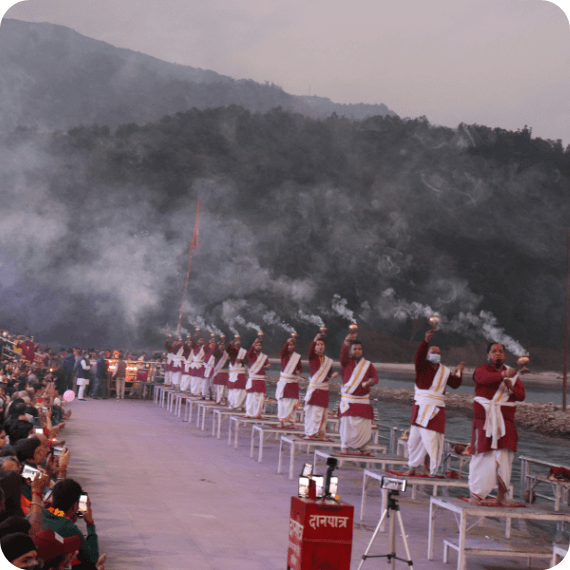
Ganga Aarti
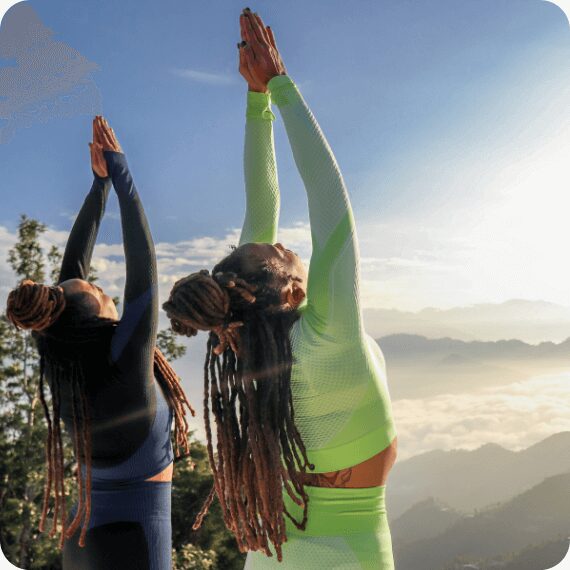
Himalayan Excursion
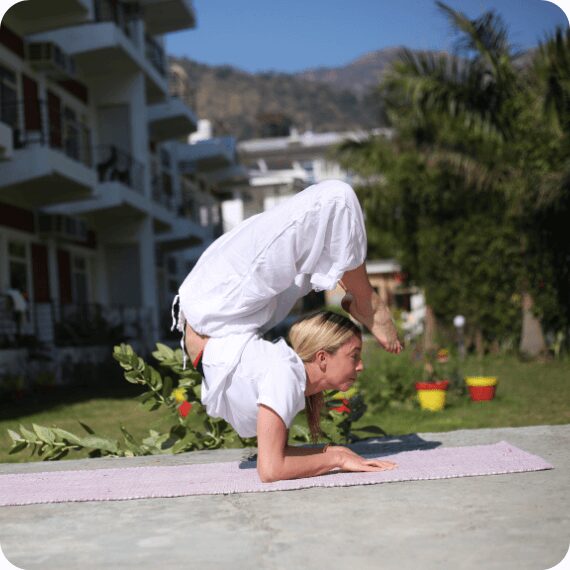
Hatha Yoga Workshop
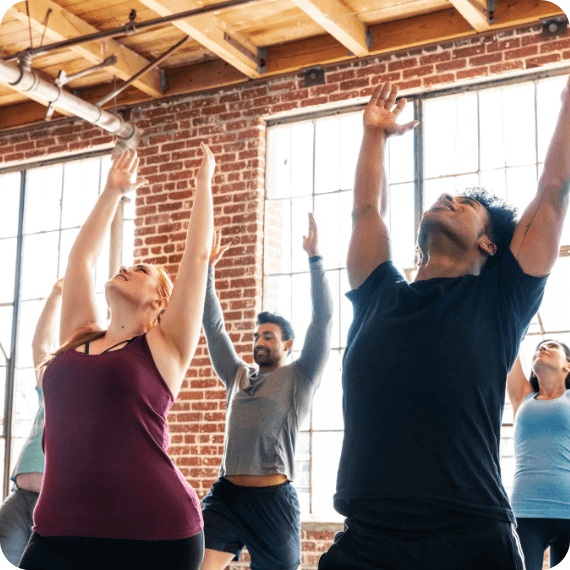
Hypertension Class
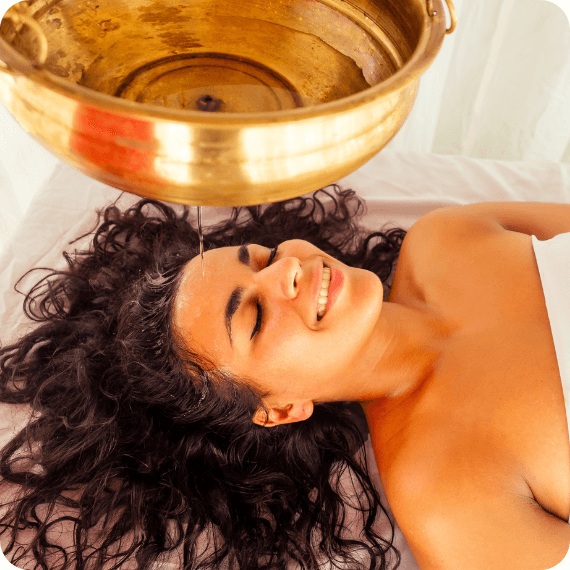
Ayurveda Class
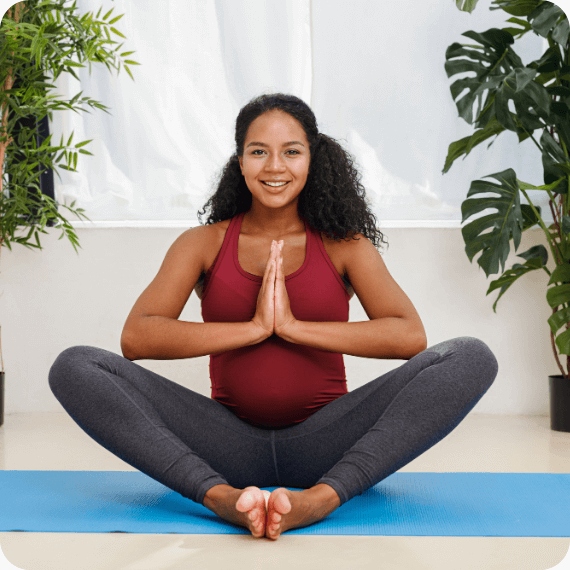
Prenetal Yoga Class



Cushion
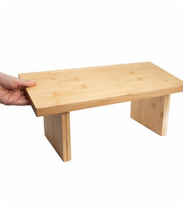
Zen Bench

Yoga Chairs
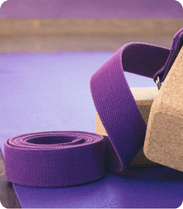
Yoga Belt
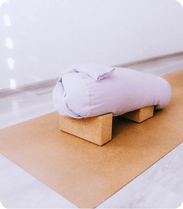
Bolsters
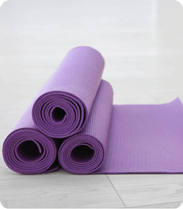
Yoga Mats
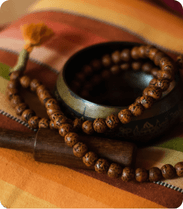
Japa Mala
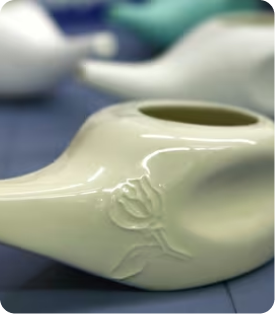
Neti Pot

Notebook & Pen
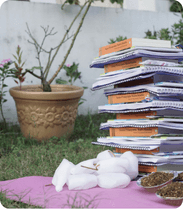
Yoga Books
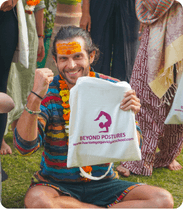
School Handbag
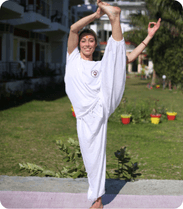
Yoga Pant
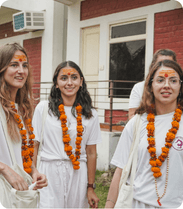
T-Shirt


Our retreat center offers comfortable and serene accommodations to ensure a peaceful and rejuvenating experience. We provide a variety of options to suit your needs and preferences.

14 Days Accommodation

2nd - 15th of each month

9 hours daily classes

Small Size Batch 15 Max

Yoga Alliance Certificate

Study Materials

Fire Ceremony

Free Yoga Equipment

3 Daily Nutritious Meals

Yoga Kitbag

Classes at Ganga Beach

Naturally ventilated, soothing spaces

Private Washroom

Cultural Program

Free WiFi

HImalayan Excursion

Ganga Arti
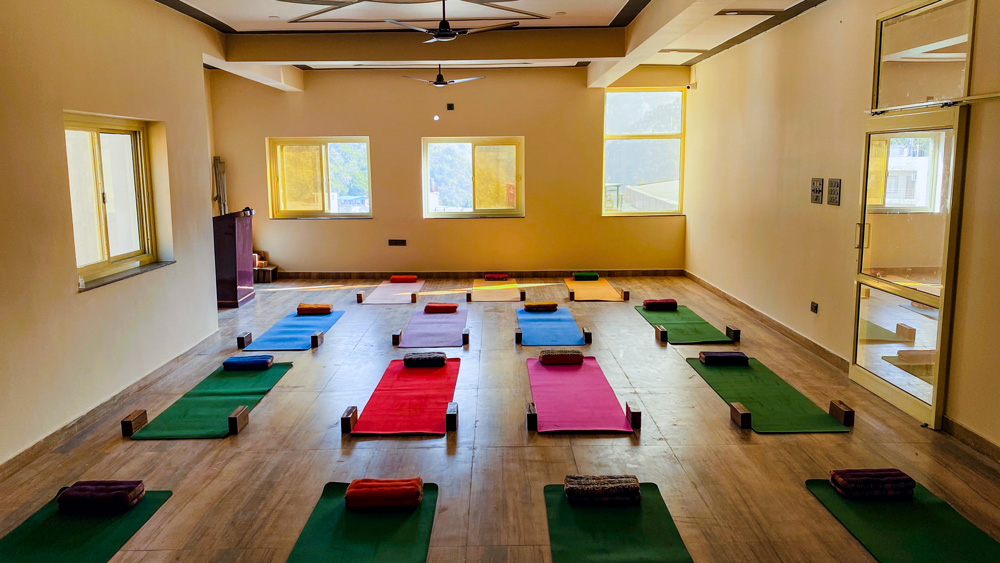


Rated 4.9 Stars by 3000+ Students
Dates
Private
Double sharing
Seats left
Book your spot
Dates
Private
Double sharing
Book your spot
Rated 4.9 Stars by 3000+ Students
Posted on

Experience Real-Time Learning from the Heart of Rishikesh
Experience Real-Time Learning from the
Heart of Rishikesh
Ready to Transform Your Life?
Take the first step towards a healthier, happier you.
About the Course: What is the 100 Hour Yoga Teacher Training?
The 100 Hour Yoga Teacher Training in Rishikesh is a foundational course designed for those who want to deepen their practice or begin their journey toward becoming a certified yoga instructor. Whether you are new to yoga or looking for an intensive yet short-duration course, this program offers a holistic approach to yoga.
Located in the heart of the Himalayas, our 100 Hour Yoga Teacher Training Course in Rishikesh, India, provides an immersive experience. Guided by expert teachers, you will explore traditional yoga techniques, philosophy, and mindful practices, preparing you to step into the world of teaching or personal transformation.
Course Benefits: Why This Training is Right for You
Enrolling in our 100 Hour Yoga Teacher Training in Rishikesh India comes with numerous benefits:
✔ Deepen Your Practice – Gain insights into Hatha, Vinyasa, and Yin Yoga under experienced teachers.
✔ Flexible Learning Path – Complete this training as a standalone course or combine it with a 200 Hour Yoga Teacher Training later.
✔ Personalized Attention – Small class sizes ensure one-on-one mentorship and personalized guidance.
✔ Serene Learning Environment – Train in a spiritual and peaceful setting, away from distractions.
✔ Internationally Recognized Certification – Completing the program earns you a Yoga Alliance-recognized certification, allowing you to teach worldwide.
Course Highlights: What You’ll Learn
The 100 Hour Yoga Teacher Training Rishikesh curriculum is carefully designed to give you a balanced mix of theoretical and practical knowledge. Here's what you can expect:
1. Yoga Asanas & Alignment
2. Pranayama & Breathwork
3. Meditation & Mindfulness
4. Yoga Philosophy & Lifestyle
5. Teaching Methodology & Ethics
Accommodation and Facilities
During your 100 Hour Yoga Teacher Training Course in Rishikesh, India, you will stay in a serene, nature-surrounded ashram equipped with comfortable rooms, healthy vegetarian meals, and breathtaking views of the Himalayas. Our facilities include:
✔ Clean and spacious rooms with attached bathrooms
✔ Three Sattvic vegetarian meals per day
✔ Free Wi-Fi, library access, and yoga props
✔ Peaceful surroundings for meditation and self-reflection
Who Should Join This Training?
This 100 Hrs Yoga Teachers Training in Rishikesh is perfect for:
✔ Beginners looking for a short yet immersive yoga experience
✔ Those wanting to explore yoga before committing to a 200-hour YTT
✔ Practitioners seeking personal transformation and self-discovery
Why Rishikesh? The Yoga Capital of the World
Rishikesh is a spiritual haven, renowned for its authentic yoga traditions, sacred Ganges river, and peaceful ashrams. By choosing to train here, you immerse yourself in an ancient yogic culture, surrounded by nature’s healing energy.
Certification & Next Steps
Upon completion, you will receive a Yoga Alliance-recognized certification, enabling you to teach beginner-level yoga classes worldwide. If you wish to continue your journey, you can enroll in our 200 Hour Yoga Teacher Training Course in Rishikesh to complete your full certification.
Ready to Begin Your Yoga Journey?
Join us for the 100 Hour Yoga Teacher Training Rishikesh India and embark on a life-changing experience. Reserve your spot today!
Experience the serenity & transformation of yoga.

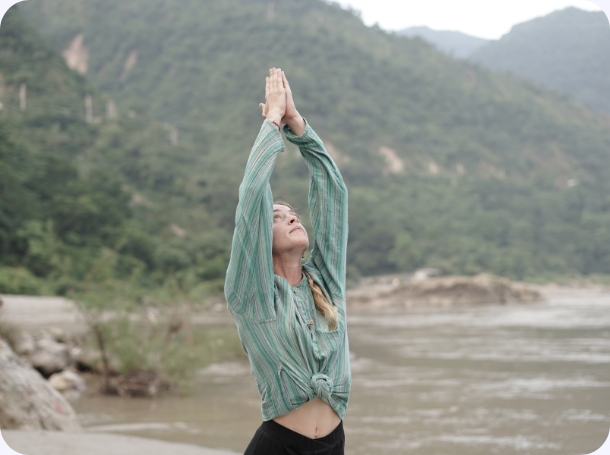
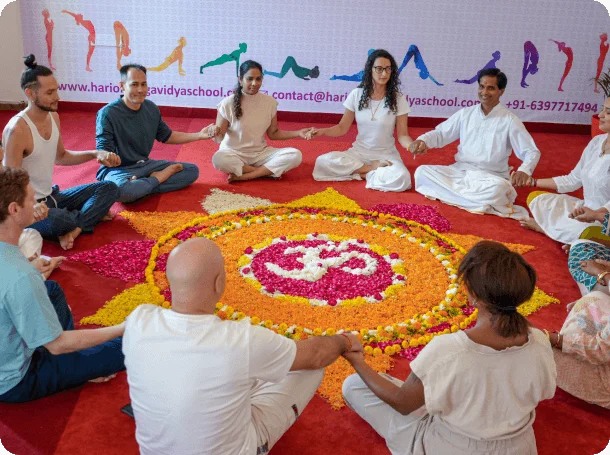
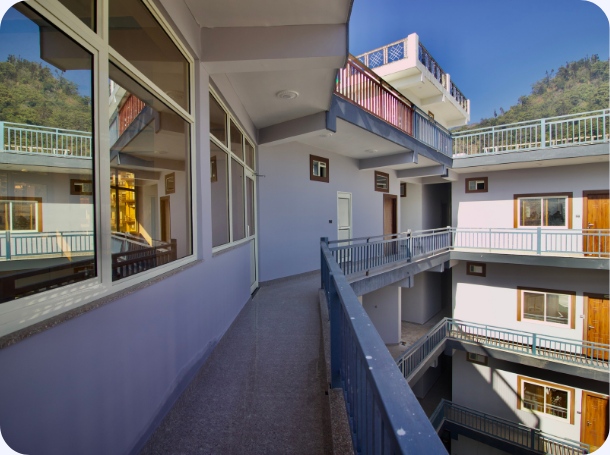
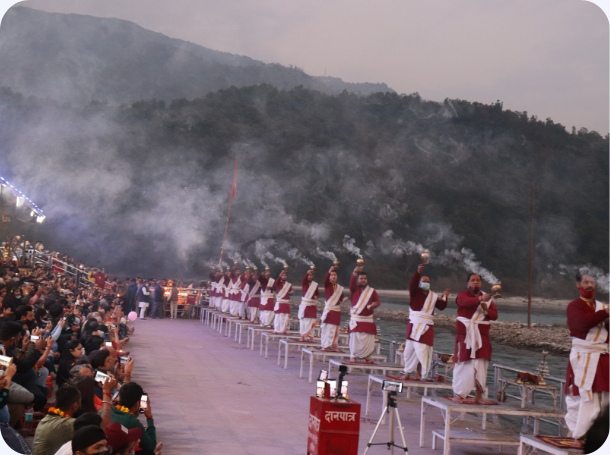



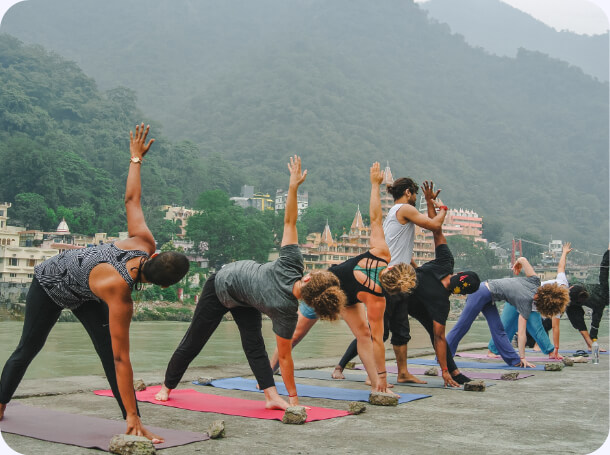
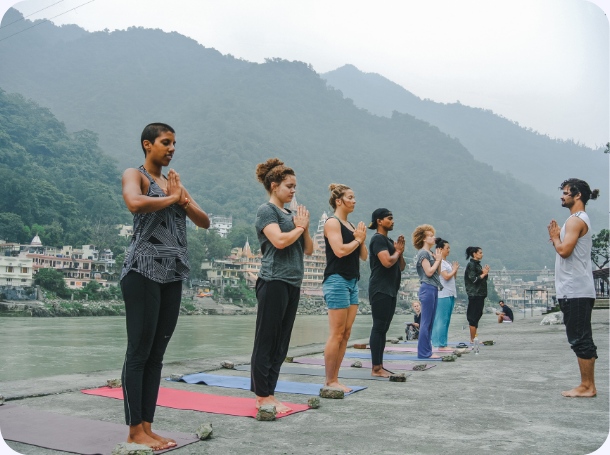
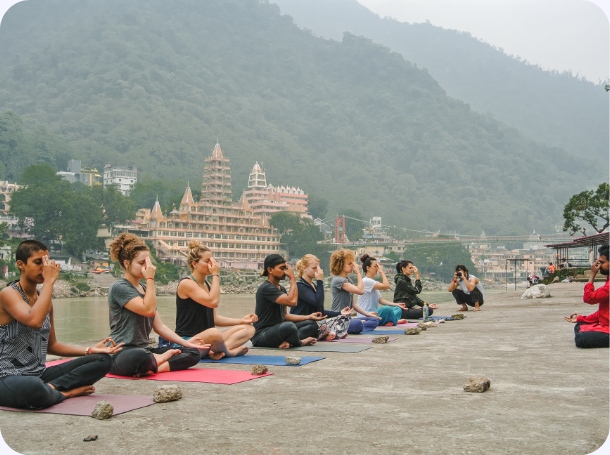
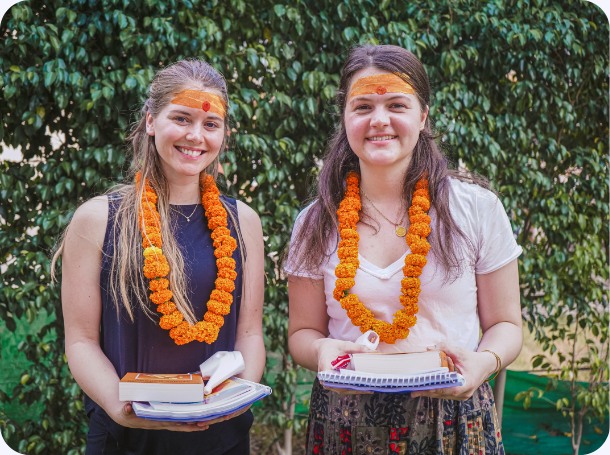
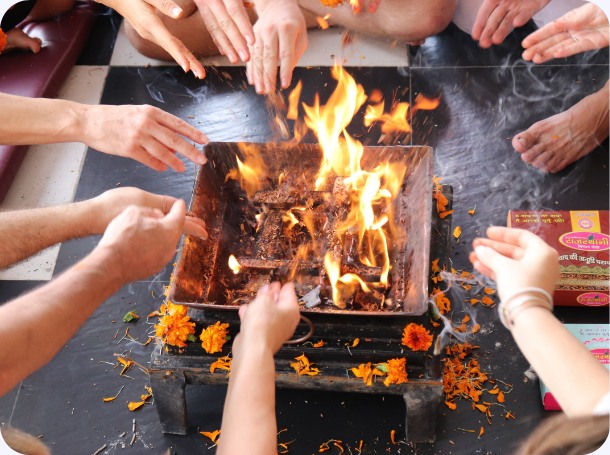
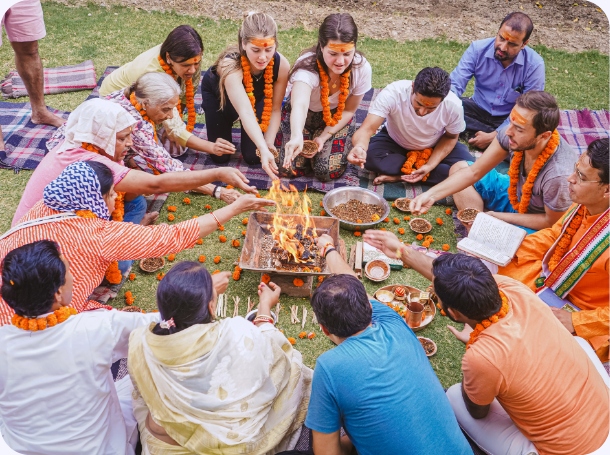
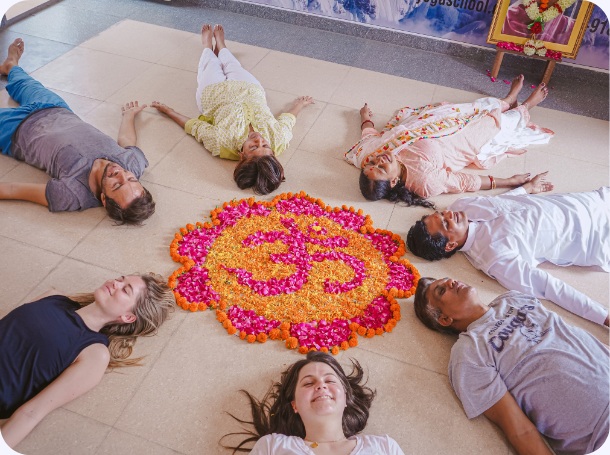
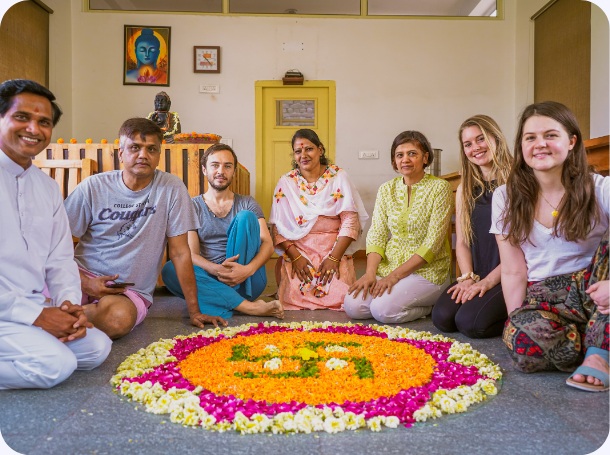
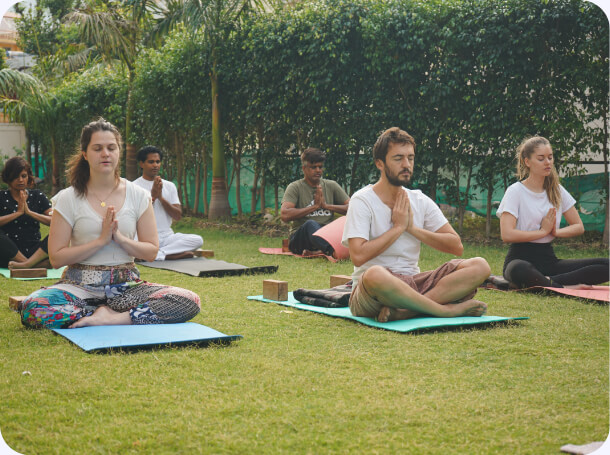
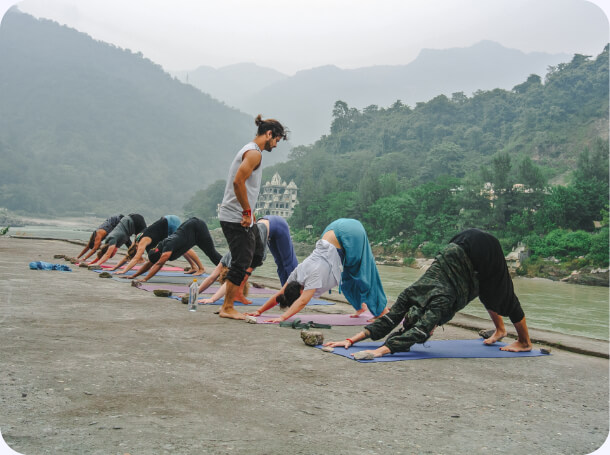
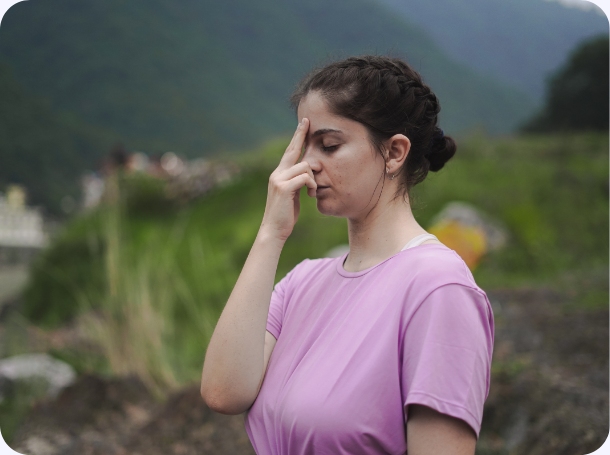

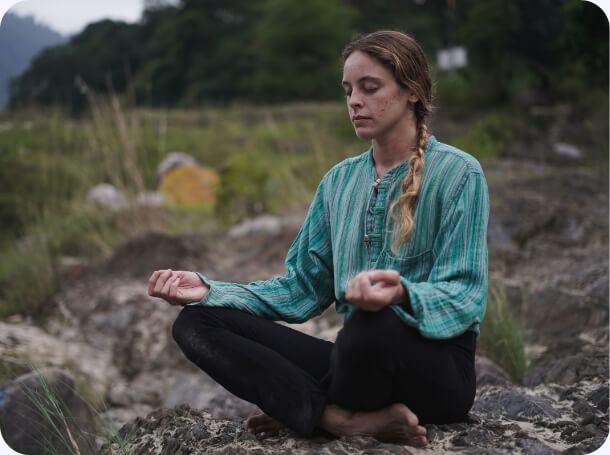
Inspiring Stories from Our Students
Get all your questions answered here
The 100 hour yoga teacher training in Rishikesh is a short yet immersive course designed for beginners and intermediate practitioners. It covers Hatha, Ashtanga, pranayama, meditation, and philosophy, helping students build a strong foundation in yoga practice and teaching.
This course is perfect for yoga enthusiasts who want to deepen their knowledge but cannot commit to a full 200-hour program. It’s also ideal for travelers, wellness seekers, and aspiring teachers who wish to experience yoga in its birthplace.
While the 100 hour yoga teacher training in Rishikesh, India is not a standalone certification for teaching, it can be counted as the first part of a 200-hour yoga teacher training certification. You can later complete another 100 hours to get a Yoga Alliance-recognized certification.
Our 100 hour yoga teacher training course in Rishikesh, India includes a blend of traditional and modern yoga styles, including:
A typical day includes:
The schedule is well-balanced to help you immerse yourself in the yogic lifestyle while allowing time for rest and self-exploration.
This 100 hour holistic yoga teacher training in Rishikesh helps you:
✅ Build a strong yoga foundation.
✅ Develop self-discipline and mindfulness.
✅ Gain insights into yogic philosophy and lifestyle.
✅ Experience authentic yoga training in the serene environment of Rishikesh.
The 100 hour yoga teacher training course in Rishikesh is a shorter program covering the basics, while the 200-hour course is a complete Yoga Alliance-certified program. If you're unsure about committing to a 200-hour course, the 100-hour course is a great starting point.
Students enjoy:
🏡 Comfortable private or shared rooms with scenic views.
🍽️ Nutritious vegetarian meals, following yogic and Ayurvedic principles.
🌿 A peaceful, spiritual environment, close to the Ganges River.
Yes! This 100 hour yoga teacher training course in Rishikesh, India is designed for both beginners and intermediate-level practitioners. No prior teaching experience is required.
You can easily book your spot by visiting our website, checking available dates, and completing the online registration. Early booking is recommended as seats fill up quickly!
About
Teacher trainings
Yoga retreats
Feel free to contact us. We will get back to you as soon as possible. We are available 24/7.